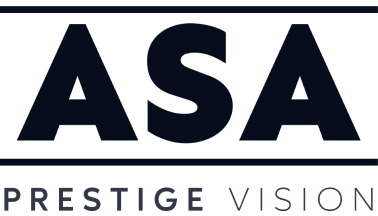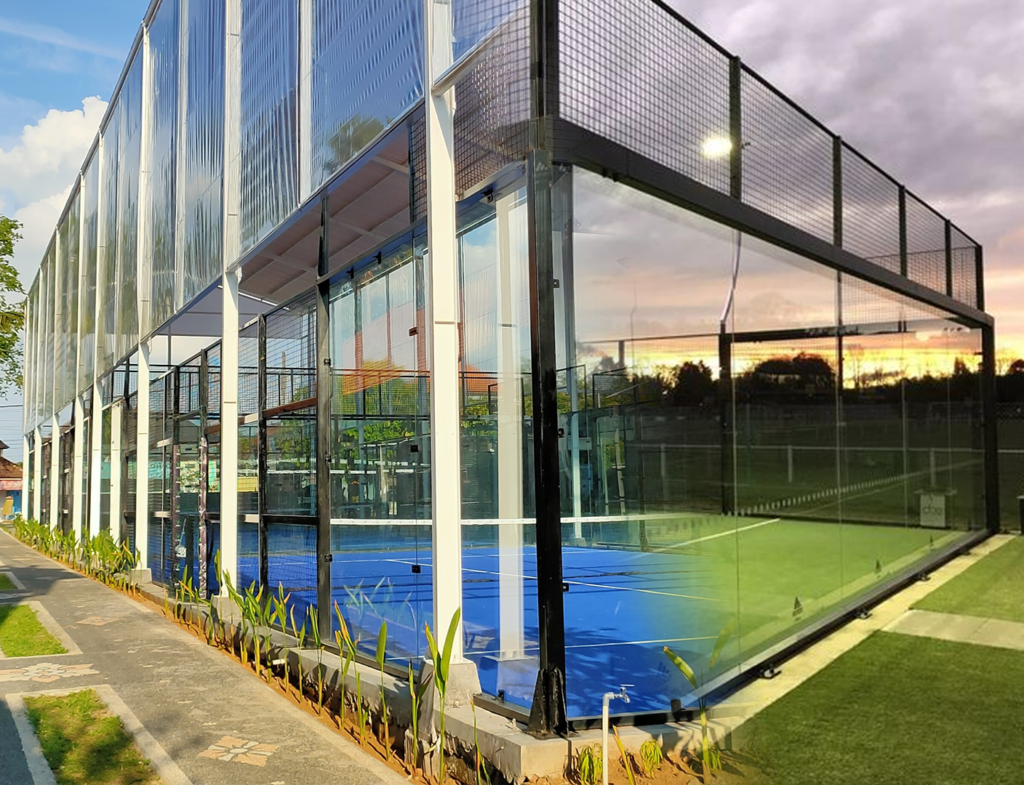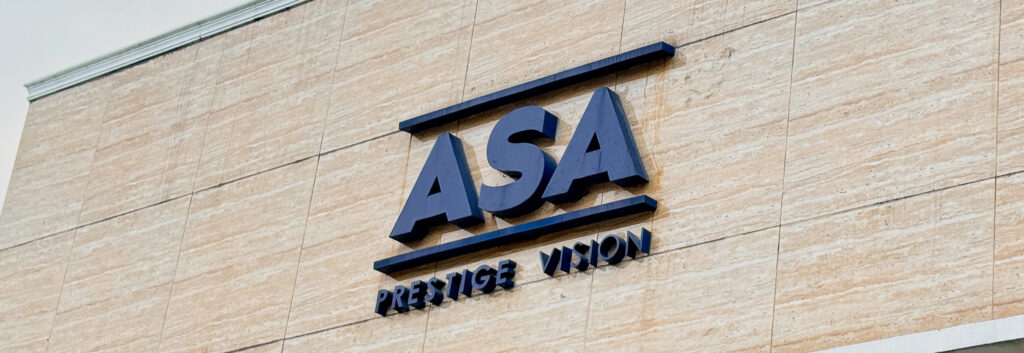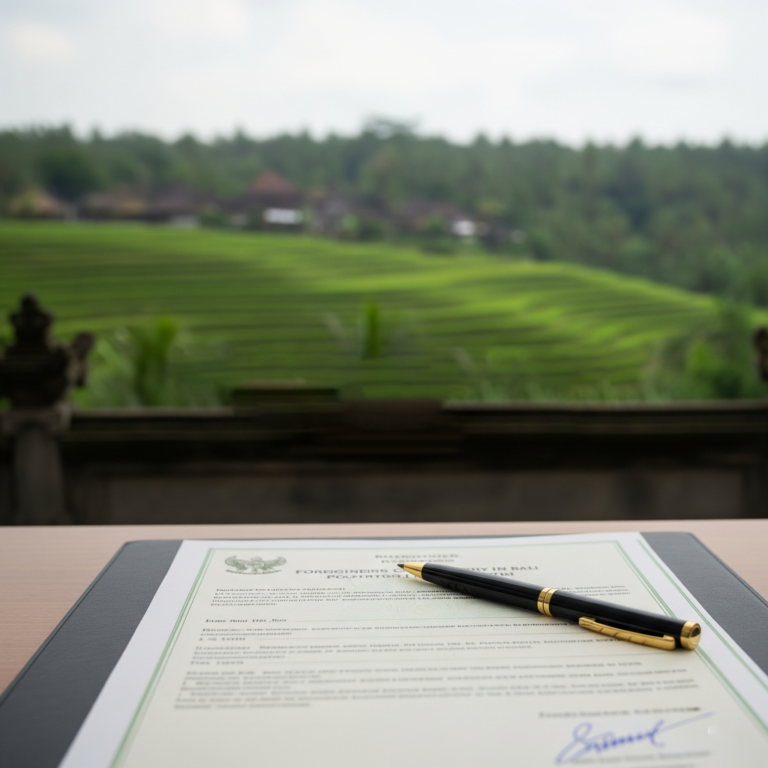An optimal padel playing experience largely hinges on court conditions, and this is where the distinction between indoor padel courts and outdoor padel courts becomes particularly relevant. In Bali, where the weather can be quite variable, choosing the right type of court is crucial. Outdoor courts offer the invigorating sensation of playing under the open sky with fresh air, but they are susceptible to weather interruptions. Conversely, Indoor courts guarantee that you can play in weather-controlled conditions where nothing influences your game.
As experienced padel court contractors in Bali, we will cover the key differences between the construction, maintenance, and overall playing experience with different styles of padel courts. This in-depth guide is intended to help you have the best information available for implementing your padel court construction project on the Island of the Gods.
Understanding Outdoor Padel Courts
Characteristics & Appeal
Entering an outdoor padel court is a singular and thrilling experience that seamlessly combines the beauty of nature with the excitement of the game. Imagine playing outside while taking in the fresh air and, frequently, the picturesque vistas that draw people to places like Bali. When it comes to initial construction costs, outdoor padel courts are often less expensive. An outdoor padel court is often referred to as a “less heavy” structure, and because the padel court generally requires much less structure than an indoor court typically requires for a roof or walls, outdoor padel courts can often have a much smaller initial cost as our extensive experience as padel court contractors in Bali shows.
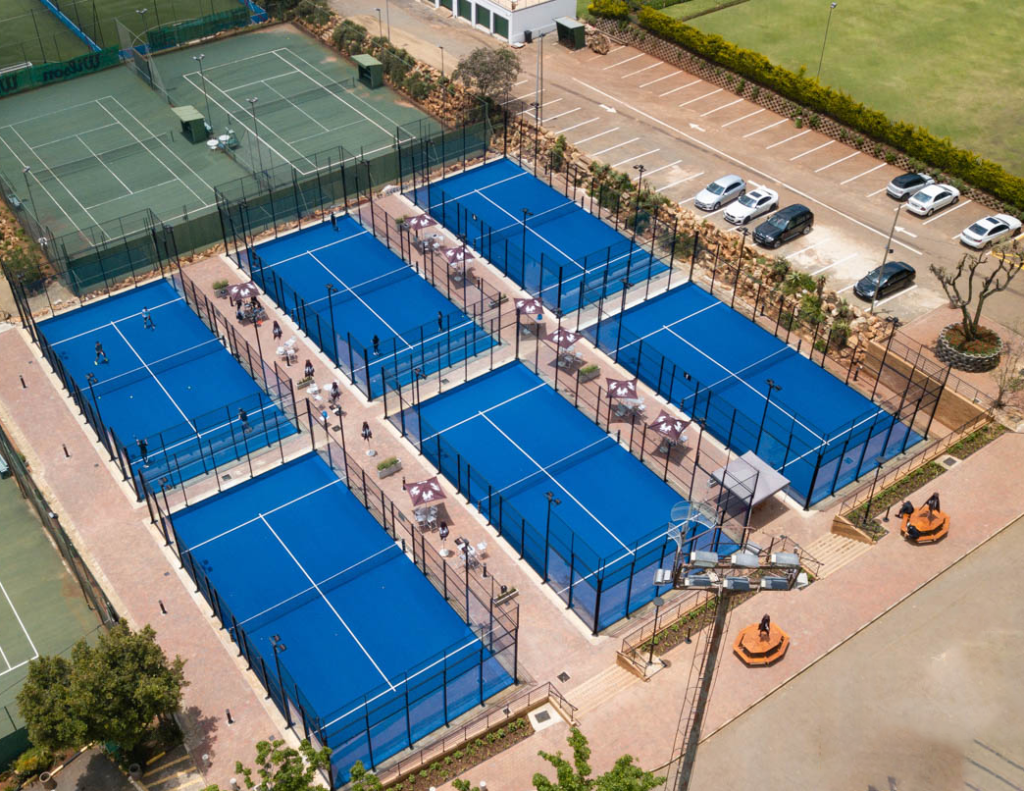
Key Advantages
An outdoor padel court has benefits beyond price. Natural lighting will greatly support players by removing the need for artificial lighting during the day and will use less energy. A more comfortable playing environment is created by natural ventilation, which guarantees a steady flow of fresh air. Furthermore, our personal experience has shown us that some maintenance features, like the lack of intricate HVAC systems, can make long-term maintenance easier.
Key Disadvantages/Considerations
However, the benefits of outdoor padel comes with its own complications. The primary challenge for outdoor padel courts is their weather dependency. In a tropical climate, like here in Bali, unpredicted rain, scorching sunlight, and gusty winds make it sometimes impossible to play. Players get frustrated and it costs commercial facilities revenue. Outdoor courts exposure to the elements can also change just the temperature between play, comfort can vary from day and evening and night
Understanding Indoor Padel Courts
Characteristics & Appeal
For players who are looking for a consistent, uninterrupted playing experience, an indoor padel court is a great option. The key differentiator in an indoor facility is that the environment is completely under controll, regardless of any outside climate conditions – a very relevant consideration in a place like Bali where sudden rains can often disrupt outdoor activities. Without the outside climate changing your play, it’s often a more premium experience for the player that can most commonly be found at padel clubs or multi-activity centres that provide a better environment to play year-round. It’s also important to recognize that there is a higher starting cost to this level of control! An indoor court needs a whole building including roof, walls, systems including HVAC and lighting – all of which have a greater starting cost when compared to an outdoor court.
Key Advantages
Choosing an indoor padel court has several benefits that will often outweigh the cost, especially for especially for commercial ventures. The greatest is you can play padel in all weather (rain or shine, day or night), guaranteed. This means you are going to play every time in optimal playing conditions with consistent temperature, consistent lighting, and no wind, as a result, you can focus on just playing without any outside interferences. We can confirm that these consistent conditions significantly enhance player comfort and satisfaction. Furthermore, the ability to operate an indoor facility around the clock with proper artificial lighting means extended operating hours, leading to more reliable booking schedules and a greater revenue potential for commercial operations.
Key Disadvantages/Considerations
In addition to these benefits, indoor padel courts also come with their own disadvantages and considerations. Firstly, as we mentioned earlier, substantial initial investment for the whole building enclosure including proper foundations, walls and a roof. After the build, we also need to consider ongoing operational costs, for example, ventilation and HVAC systems are required to control temperature and air flow to make the space comfortable for everyone, which adds to the initial costs for installation and creates ongoing age consumption. Additionally, we know that artificial lighting is needed to play indoors and it absolutely contributes to your energy bills. Indoor courts come with a number of minimum space requirements too – namely minimum height clearance and required floor area, and if you building it all inside an enclosed structure then you may have your hands tied in some locations also to those requirements. Finally, the permitting associated with indoor facilities can vary from job to job, however, it can most certainly be a more sophisticated process than outdoor facilities because you have building code requirements and regulations to manage which we always do within the planning process with our clients.
Key Differences at a Glance
Choosing between an indoor and outdoor padel court involves weighing distinct advantages and disadvantages. To simplify your decision-making process, especially for your padel court construction project in Bali, here’s a concise comparison highlighting the key differences we’ve observed in our extensive experience:
Cost
Outdoor padel courts generally have a lower initial construction cost due to simpler structural needs. However, indoor padel courts incur higher upfront expenses for the building, roofing, and essential systems like HVAC and lighting, which also contribute to higher long-term operational energy costs.
Weather Impact
Outdoor courts are highly susceptible to rain, sun, and wind, leading to potential play interruptions. Indoor courts, conversely, offer complete all-weather playability, ensuring consistent access regardless of external elements.
Playing Conditions
Play on outdoor courts can be variable, influenced by temperature, humidity, and wind. Indoor courts provide consistent, optimal playing conditions with stable temperatures, uniform lighting, and no wind interference, enhancing gameplay.
Maintenance
Outdoor courts require more environmental maintenance (cleaning debris, UV protection) and are prone to wear from the elements. Indoor courts shift maintenance focus to internal systems like HVAC and lighting, though they are protected from outdoor environmental factors.
Player Comfort
Players on outdoor courts are exposed to the elements, which can impact comfort during extreme weather. Indoor courts offer a controlled and comfortable environment, protected from heat, rain, or strong winds.
Operating Hours
Outdoor courts are typically limited by daylight and suitable weather conditions. Indoor courts offer extended operating hours, including evenings and nights, thanks to artificial lighting and climate control, making them ideal for commercial ventures.
Aesthetics
Outdoor courts can integrate naturally and beautifully with the surrounding landscape, particularly appealing in scenic locations like Bali. Indoor courts require a dedicated, enclosed structure, often designed for functionality within a club or facility setting.
Read Also : Best Locations for Padel Court in Bali
Factors to Consider When Choosing Your Padel Court
Budget
Beyond the initial construction estimate, consider the full financial scope. Outdoor padel courts generally have a lower upfront cost due to less complex structural requirements. However, indoor padel courts demand a higher initial investment for the full building, roofing, and specialized systems. Don’t forget long-term operational costs; outdoor courts might incur more environmental cleaning and minor repairs due to exposure, while indoor courts will have ongoing electricity expenses for lighting and HVAC systems.
Read Also : Building a Padel Court in Bali: What You Need to Know
Location & Climate (Crucial for Bali!)
Your geographical location plays a massive role. In Bali’s tropical climate, you must consider factors like frequent rainfall, high humidity, and peak temperatures. While an outdoor court embraces the island’s beauty, will frequent rain or intense heat limit usability? Also, assess your available land. Do you have ample space for an outdoor padel court that blends with the landscape, or is an indoor facility a more feasible option in a denser, urbanized area? For outdoor courts, also consider proximity to residential zones, as noise from play can sometimes be a concern.
Intended Use & Target Audience
Who will be using the court, and for what purpose? If you’re planning a commercial padel club aiming for consistent revenue, an indoor padel court offers reliable booking schedules year-round, regardless of weather. For a private residence, hotel, or resort in Bali, an outdoor padel court might be aesthetically more appealing and perfect for casual play and guest enjoyment, but remember to weigh guest comfort during extreme weather. For serious competition or professional training, an indoor court is almost always preferred due to its consistent, controlled playing conditions.
Player Experience & Comfort
Consider what you want the players to experience. Is uninterrupted play paramount? Do you want to guarantee consistent conditions—temperature, light, and no wind—for every game? If so, an indoor court offers superior player comfort and a premium playing environment, protected from the elements. If occasional weather interruptions are acceptable for the joy of playing outdoors, then that’s a valid choice.
Long-Term Vision
Think ahead. Do you anticipate future expansion of your padel facilities? Are you aiming to operate a year-round facility that maximizes availability and potential revenue streams? Your long-term vision will heavily influence whether the robust, all-weather capabilities of an indoor padel court or the more natural, potentially seasonal appeal of an outdoor court aligns better with your strategic goals.
Conclusion
Choosing between an indoor padel court and an outdoor padel court is a pivotal decision, as each offers distinct benefits and challenges. As we’ve explored, factors ranging from initial investment and long-term operational costs to weather dependency, player comfort, and your specific target audience all play a crucial role. There’s no single “best” solution; rather, the ideal choice hinges entirely on your unique needs, available space in Bali, and the long-term vision for your padel court project.
Making the right choice for your padel court is a significant investment that truly benefits from expert guidance. At ASA Group Indonesia, we specialize in designing and constructing high-quality padel courts across Bali and beyond. Whether you’re envisioning a sun-drenched outdoor court perfectly integrated into your landscape or a state-of-the-art indoor facility offering year-round play, our experienced team is here to help.
Contact ASA Group Indonesia today for a personalized consultation and let us turn your padel court vision into a reality!
